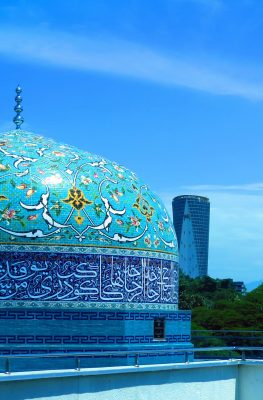Published on November 29, 2017

St. Joseph Parish in Las Piñas, Metro Manila is home to the world’s oldest and only bamboo organ. Nearly two centuries old, the priceless organ is made almost entirely of bamboo indigenous to Luzon. A 10-day musical affair was conceived around it in 1976; to date, the International Bamboo Organ Festival attracts musicians and audiences from all over the globe.
Scheduled every year on the second week of February, the festival hosts a slew of concerts every evening. Flanked on either side by a choir and a small orchestra, top local pianists and globally renowned talents come to play the likes of Bach, Vivaldi, and Mozart on the singular instrument.
The organ itself was cobbled together by Fr. Diego Cera, an Augustinian priest who, likewise, was the architect of the town’s stone church. Cera buried the bamboo pipes by the banks of a river for two years to cure the wood. The organ itself took eight years to build, from 1816 to 1824. Sadly, it was left disused and in disrepair for many years following natural disasters that took their toll on the church and the instrument therein.
Finally, in 1972, a German firm specializing in bamboo organs, Klais Orgelbau, saw to a comprehensive restoration of the organ, unveiling it to the world and, finally, shipping it back to the Philippines good as new in 1975. In 2003 — after extensive scrutiny by a panel of experts — the bamboo organ was declared a National Cultural Treasure by the National Museum of the Philippines.
You Might Also Like…
For similar festivals that celebrate the local vibrant culture, visit Malaysia’s Sabah Fest; Thailand’s Loi Krathong Festival; and Vietnam’s Hue Festival. For other festivals in the month of February, visit Brunei’s Hari Nasional celebrations and Laos’ Boun Vat Phou Champasak.






